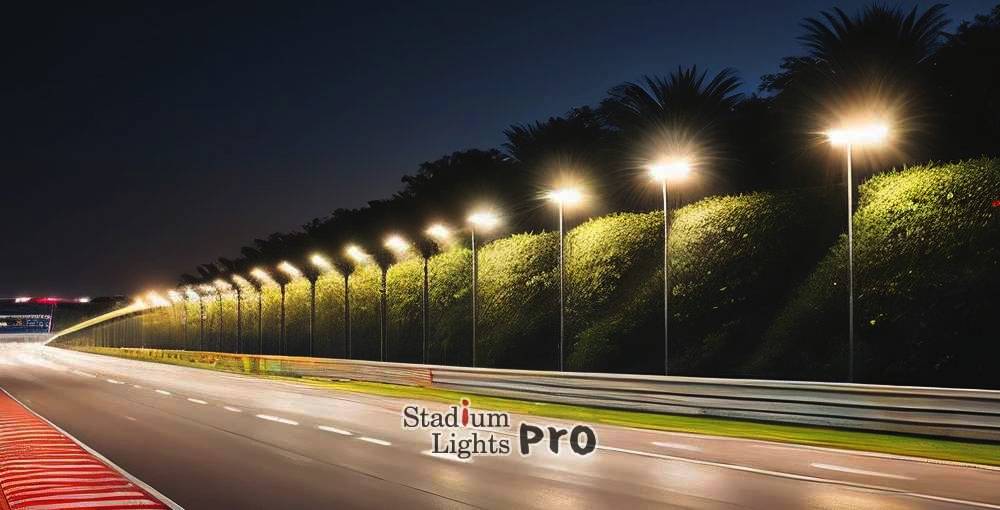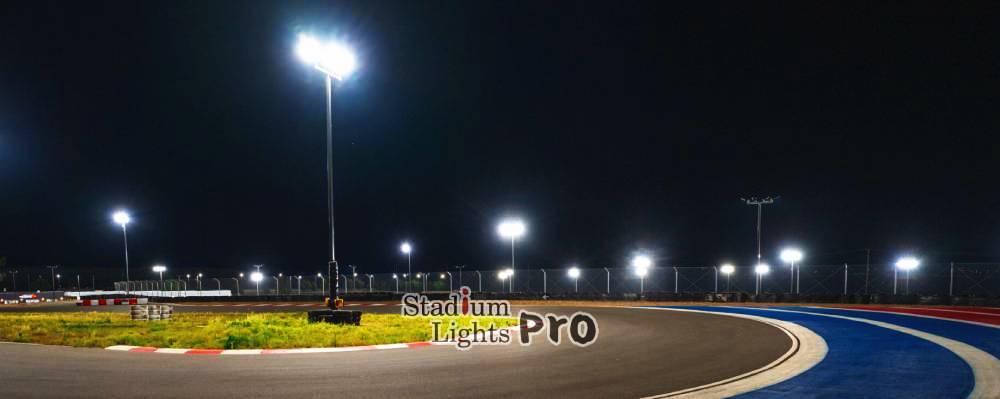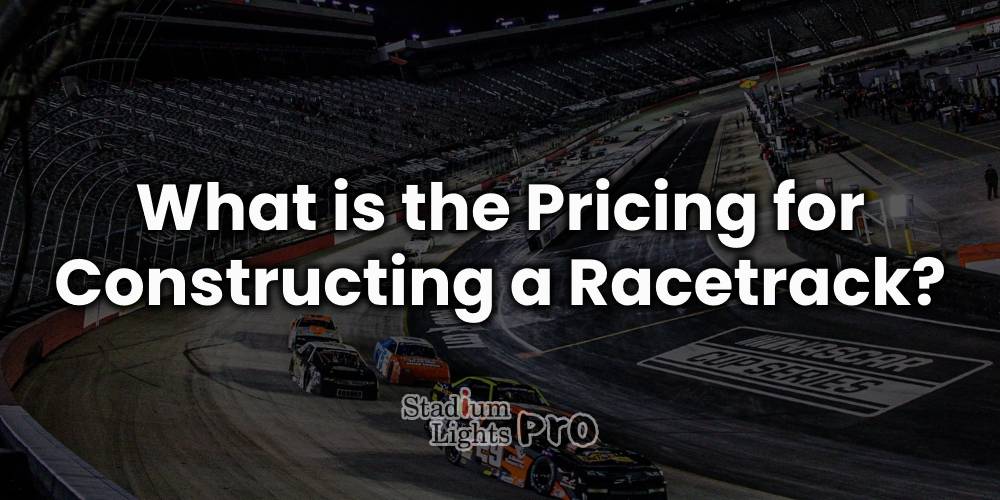Constructing a racetrack is a complex endeavor that requires careful planning and consideration of various factors. These factors can significantly influence the overall costs, making it crucial for potential developers to understand what drives these expenses. The type of racetrack, location, design, materials, and amenities all contribute to the final price. This exploration delves into the various aspects of racetrack construction costs, providing insights into how to budget effectively for such a project.
Table of Contents
ToggleKey Factors Influencing Cost
The cost of constructing a racetrack is determined by a variety of factors, each impacting the budget differently.
Location and Land Acquisition
The location of the racetrack plays a significant role in overall costs. Land acquisition expenses can vary widely based on the region and local real estate market conditions. Developers must consider zoning regulations that dictate how land can be used, which may involve additional costs for securing permits or making necessary modifications to comply with local laws.
Environmental considerations are also crucial. Depending on the location, developers may need to conduct environmental impact studies, which can be costly and time-consuming. Mitigation measures to address any potential environmental concerns can further add to the budget.
Design and Engineering
The design and engineering phase is vital in determining construction costs. Hiring professional architects and engineers to create a racetrack design can represent a significant portion of the overall budget. The complexity of the track’s design, including features such as elevation changes, banking, and unique turns, will influence these costs.
Custom design features, such as hospitality suites, electronic timing systems, and safety barriers, can also add to the expenses. Developers should ensure they work with experienced professionals to create a design that meets safety standards while maximizing the track’s potential for events.

Construction Materials and Labor
The choice of construction materials directly impacts the overall costs of building a racetrack. For asphalt tracks, expenses can include high-quality asphalt, aggregate base materials, and additional layers to ensure durability. Dirt tracks, while generally less expensive, still require significant investment in quality dirt and proper drainage systems to maintain surface integrity.
Labor costs vary depending on the region and the availability of skilled workers. Areas with a high demand for construction services may see elevated labor rates, which can significantly influence the total cost of the project. Engaging experienced contractors who specialize in racetrack construction can help mitigate some of these expenses by ensuring the work is completed efficiently and to a high standard.
Amenities and Infrastructure
To enhance the racetrack’s appeal and functionality, various amenities and infrastructure must be considered. Grandstands and seating for spectators are significant expenditures. The size and design of these facilities will dictate costs, as will the materials used in construction.
Paddocks, garages, and maintenance facilities are also crucial components of a racetrack. These areas need to be well-designed to accommodate teams and their equipment, ensuring a smooth racing experience. Additionally, sufficient parking and access roads are necessary to manage the influx of spectators and participants during events.
Estimated Costs
Understanding the estimated costs associated with constructing a racetrack involves breaking down expenses into manageable components. The following table provides a general overview of typical costs for different types of racetracks.
| Type of Racetrack | Base Construction Cost (per mile) | Materials Cost | Labor Cost | Design & Engineering Cost | Additional Features Cost | Total Estimated Cost |
|---|---|---|---|---|---|---|
| Asphalt Oval Track | $1.5 million – $3 million | $500,000 – $1 million | $300,000 – $600,000 | $100,000 – $250,000 | $500,000 – $1 million | $2.4 million – $5 million |
| Asphalt Road Course | $2 million – $5 million | $700,000 – $1.5 million | $400,000 – $800,000 | $150,000 – $300,000 | $1 million – $2 million | $4.3 million – $9.3 million |
| Dirt Track | $500,000 – $1.5 million | $100,000 – $300,000 | $150,000 – $400,000 | $30,000 – $100,000 | $50,000 – $200,000 | $830,000 – $2.5 million |
| Drag Strip | $500,000 – $1 million | $150,000 – $300,000 | $100,000 – $250,000 | $50,000 – $100,000 | $200,000 – $500,000 | $1 million – $2.1 million |
| Motocross Track | $250,000 – $750,000 | $50,000 – $150,000 | $75,000 – $200,000 | $20,000 – $50,000 | $25,000 – $100,000 | $420,000 – $1.15 million |
As seen in the table, asphalt oval tracks tend to have higher costs due to the materials and construction techniques involved. Road courses, with their added complexity, also come with elevated expenses. Dirt tracks, while generally more affordable, still require careful planning and investment in quality materials to ensure longevity.

Case Studies
Examining case studies can provide further insight into the costs associated with racetrack construction. For instance, the construction of the Kansas Speedway, an asphalt oval track, cost approximately $250 million. This facility features state-of-the-art amenities and has hosted numerous major racing events, showcasing the potential return on investment for such an endeavor.
In contrast, the construction of a smaller dirt track in rural areas may have cost around $750,000. This price reflects the lower land acquisition costs and simpler construction requirements. Each project varies significantly based on location, design, and intended use.
Ongoing Costs
| Cost Category | Description | Estimated Annual Cost |
|---|---|---|
| Maintenance and Repairs | Regular maintenance of track surface (asphalt/dirt) | $50,000 – $100,000 |
| Utilities | Water, electricity, and waste management | $20,000 – $40,000 |
| Staff Salaries | Salaries for operational staff (security, ticketing, etc.) | $100,000 – $300,000 |
| Insurance | Liability and property insurance costs | $20,000 – $50,000 |
| Event Promotion | Marketing costs for events and races | $15,000 – $30,000 |
| Upgrades and Improvements | Costs for enhancing safety features and track amenities | $25,000 – $75,000 |
| Licensing and Permits | Fees for necessary licenses and permits | $5,000 – $15,000 |
| Miscellaneous Expenses | Unexpected costs and contingency funds | $10,000 – $25,000 |
| Total Estimated Annual Cost | $255,000 – $635,000 |
The expenses associated with a racetrack extend beyond the initial construction phase. Understanding ongoing costs is vital for developers to maintain financial viability over time.
Maintenance and Repairs
Routine maintenance and repairs are essential for ensuring the racetrack remains safe and operational. Asphalt tracks require periodic resurfacing, which can cost tens of thousands of dollars depending on the size of the track and the severity of wear and tear. Dirt tracks need regular grading and replenishment of the surface material to maintain optimal racing conditions.
Operational Costs
Operational costs encompass various expenses, including staff salaries, utilities, and insurance. Staffing a racetrack for events involves hiring personnel for security, ticketing, and event management. These costs can fluctuate based on the scale of the events hosted at the facility.
Utilities such as water, electricity, and waste management contribute to the operational budget. As the track hosts more events, these expenses will increase, necessitating careful financial planning.
Insurance costs are another consideration. Given the nature of racing, liability insurance is crucial for protecting the facility from potential lawsuits. Rates for insurance can vary widely based on the track’s location, type, and the events hosted.
Upgrades and Improvements
To stay competitive, racetrack owners must also consider periodic upgrades and improvements. These can range from enhancing safety features, such as updated barriers and fencing, to adding new technology for timing and scoring. Over time, amenities may need renovations or expansions to accommodate growing audiences and evolving standards in the racing industry.
Financing Options
Securing financing for racetrack construction requires careful consideration of various options available to developers.
Traditional Loans and Investors
Many racetrack projects are financed through traditional loans from banks or private lenders. These loans typically require a detailed business plan outlining the project’s scope, estimated costs, and potential revenue streams. Developers may also seek out private investors interested in the racing industry who can provide the necessary capital in exchange for equity in the project.

Sponsorship and Partnerships
Sponsorship and partnerships with corporations can also provide significant financial backing for racetrack construction. Major companies often seek advertising opportunities and visibility associated with racing events, making them ideal partners for funding. These relationships can also lead to long-term revenue through sponsorship agreements once the track is operational.
Government Grants and Incentives
In some regions, government grants and incentives may be available to support racetrack construction, especially if the project promises to boost local tourism and create jobs. Developers should research local and state programs that offer financial assistance for such projects, as these can significantly reduce initial costs.
Additional Considerations
While the focus has been primarily on the costs associated with constructing and operating a racetrack, there are additional considerations that developers should keep in mind.
Community Engagement
Engaging the local community is vital to ensure support for the project. Hosting community meetings to discuss plans and address concerns can foster positive relationships with local residents. Understanding their perspectives can also help in designing a racetrack that aligns with community interests, potentially increasing attendance and support for events.
Regulatory Compliance
Navigating the regulatory landscape is crucial for racetrack developers. Local, state, and federal regulations may impose restrictions on noise, environmental impact, and safety standards. Failing to comply with these regulations can lead to costly delays and fines, making it essential to work with legal experts familiar with the racing industry.
Market Research
Conducting thorough market research can help developers identify the best location and design for a racetrack. Understanding the target audience, competition, and potential event types will inform decisions about amenities and features. Researching local racing trends can also guide investment in specific types of racetracks that are in high demand.
Conclusion
Constructing a racetrack requires careful financial planning and consideration of numerous factors that influence costs. From the type of racetrack and location to ongoing expenses and financing options, understanding these elements is vital for a successful project. Thorough planning, market research, and community engagement can contribute to the racetrack’s viability and long-term success. By approaching the construction process with diligence and foresight, developers can create a facility that meets the needs of racing enthusiasts while ensuring financial sustainability over time.

